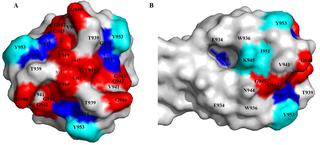当前位置:
X-MOL 学术
›
PLOS Pathog.
›
论文详情
Our official English website, www.x-mol.net, welcomes your
feedback! (Note: you will need to create a separate account there.)
Molecular anatomy of the receptor binding module of a bacteriophage long tail fiber.
PLoS Pathogens ( IF 5.5 ) Pub Date : 2019-12-19 , DOI: 10.1371/journal.ppat.1008193 Mohammad Z Islam 1 , Andrei Fokine 2 , Marthandan Mahalingam 1 , Zhihong Zhang 1 , Carmela Garcia-Doval 3 , Mark J van Raaij 3 , Michael G Rossmann 2 , Venigalla B Rao 1
PLoS Pathogens ( IF 5.5 ) Pub Date : 2019-12-19 , DOI: 10.1371/journal.ppat.1008193 Mohammad Z Islam 1 , Andrei Fokine 2 , Marthandan Mahalingam 1 , Zhihong Zhang 1 , Carmela Garcia-Doval 3 , Mark J van Raaij 3 , Michael G Rossmann 2 , Venigalla B Rao 1
Affiliation

|
Tailed bacteriophages (phages) are one of the most abundant life forms on Earth. They encode highly efficient molecular machines to infect bacteria, but the initial interactions between a phage and a bacterium that then lead to irreversible virus attachment and infection are poorly understood. This information is critically needed to engineer machines with novel host specificities in order to combat antibiotic resistance, a major threat to global health today. The tailed phage T4 encodes a specialized device for this purpose, the long tail fiber (LTF), which allows the virus to move on the bacterial surface and find a suitable site for infection. Consequently, the infection efficiency of phage T4 is one of the highest, reaching the theoretical value of 1. Although the atomic structure of the tip of the LTF has been determined, its functional architecture and how interactions with two structurally very different Escherichia coli receptor molecules, lipopolysaccharide (LPS) and outer membrane protein C (OmpC), contribute to virus movement remained unknown. Here, by developing direct receptor binding assays, extensive mutational and biochemical analyses, and structural modeling, we discovered that the ball-shaped tip of the LTF, a trimer of gene product 37, consists of three sets of symmetrically alternating binding sites for LPS and/or OmpC. Our studies implicate reversible and dynamic interactions between these sites and the receptors. We speculate that the LTF might function as a "molecular pivot" allowing the virus to "walk" on the bacterium by adjusting the angle or position of interaction of the six LTFs attached to the six-fold symmetric baseplate.
中文翻译:

噬菌体长尾纤维受体结合模块的分子解剖学。
尾噬菌体(噬菌体)是地球上最丰富的生命形式之一。它们编码高效的分子机器来感染细菌,但人们对噬菌体和细菌之间最初导致不可逆病毒附着和感染的相互作用知之甚少。迫切需要这些信息来设计具有新宿主特异性的机器,以对抗抗生素耐药性,这是当今全球健康的主要威胁。带尾噬菌体 T4 为此目的编码了一个专门的装置,即长尾纤维 (LTF),它允许病毒在细菌表面移动并找到合适的感染位点。因此,噬菌体 T4 的感染效率是最高的之一,达到了理论值 1。虽然 LTF 尖端的原子结构已经确定,它的功能结构以及与两种结构上非常不同的大肠杆菌受体分子脂多糖 (LPS) 和外膜蛋白 C (OmpC) 的相互作用如何促进病毒运动仍然未知。在这里,通过开发直接受体结合测定、广泛的突变和生化分析以及结构建模,我们发现 LTF 的球形尖端(基因产物 37 的三聚体)由三组对称交替的 LPS 结合位点和/ 或 OmpC。我们的研究涉及这些位点和受体之间的可逆和动态相互作用。我们推测 LTF 可能起到“分子支点”的作用,让病毒“行走”
更新日期:2019-12-20
中文翻译:

噬菌体长尾纤维受体结合模块的分子解剖学。
尾噬菌体(噬菌体)是地球上最丰富的生命形式之一。它们编码高效的分子机器来感染细菌,但人们对噬菌体和细菌之间最初导致不可逆病毒附着和感染的相互作用知之甚少。迫切需要这些信息来设计具有新宿主特异性的机器,以对抗抗生素耐药性,这是当今全球健康的主要威胁。带尾噬菌体 T4 为此目的编码了一个专门的装置,即长尾纤维 (LTF),它允许病毒在细菌表面移动并找到合适的感染位点。因此,噬菌体 T4 的感染效率是最高的之一,达到了理论值 1。虽然 LTF 尖端的原子结构已经确定,它的功能结构以及与两种结构上非常不同的大肠杆菌受体分子脂多糖 (LPS) 和外膜蛋白 C (OmpC) 的相互作用如何促进病毒运动仍然未知。在这里,通过开发直接受体结合测定、广泛的突变和生化分析以及结构建模,我们发现 LTF 的球形尖端(基因产物 37 的三聚体)由三组对称交替的 LPS 结合位点和/ 或 OmpC。我们的研究涉及这些位点和受体之间的可逆和动态相互作用。我们推测 LTF 可能起到“分子支点”的作用,让病毒“行走”











































 京公网安备 11010802027423号
京公网安备 11010802027423号